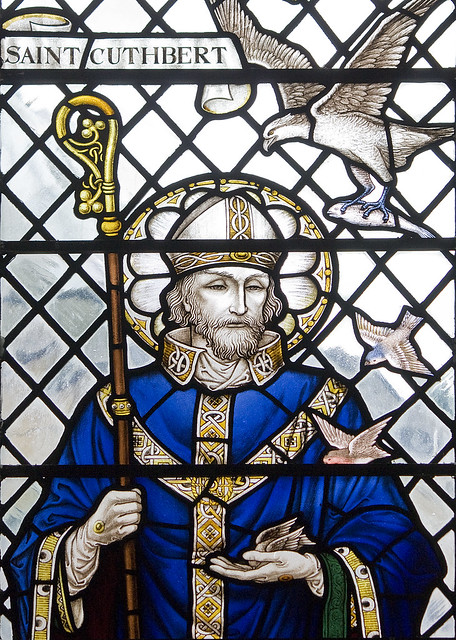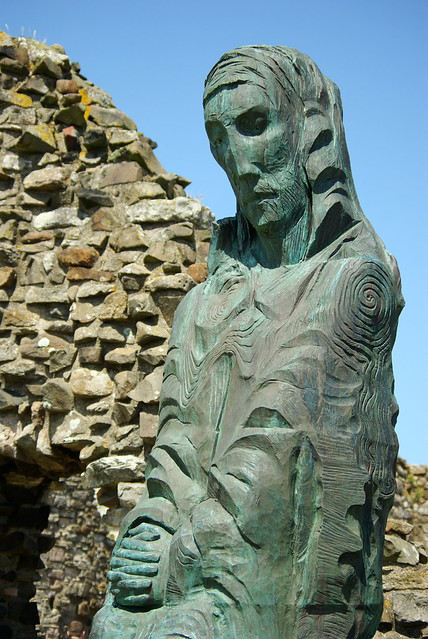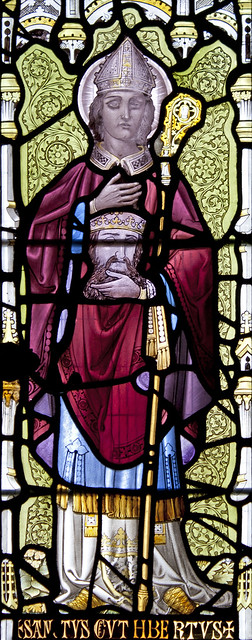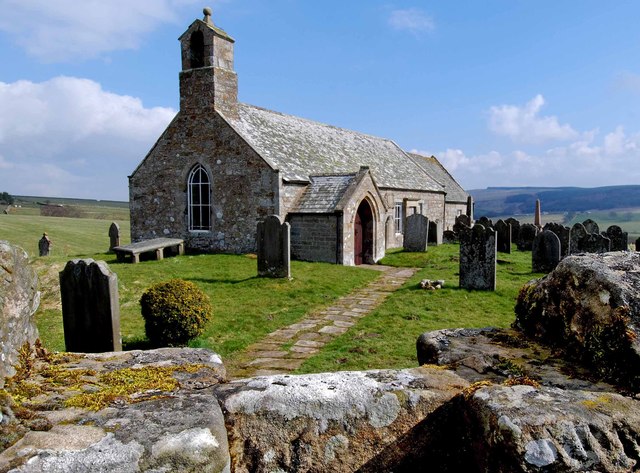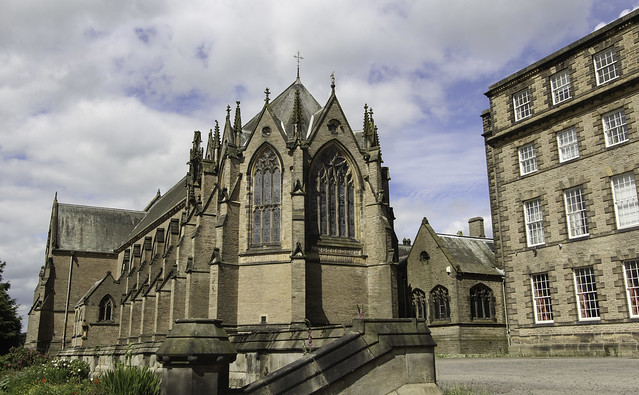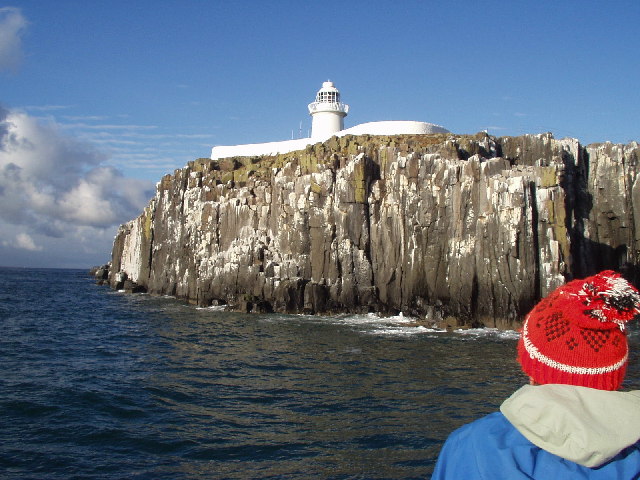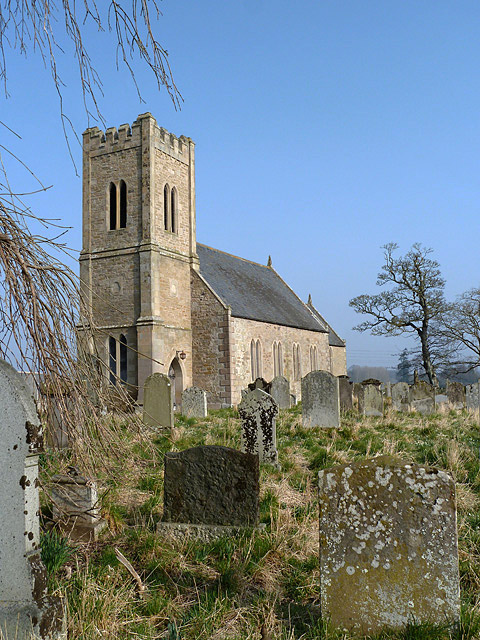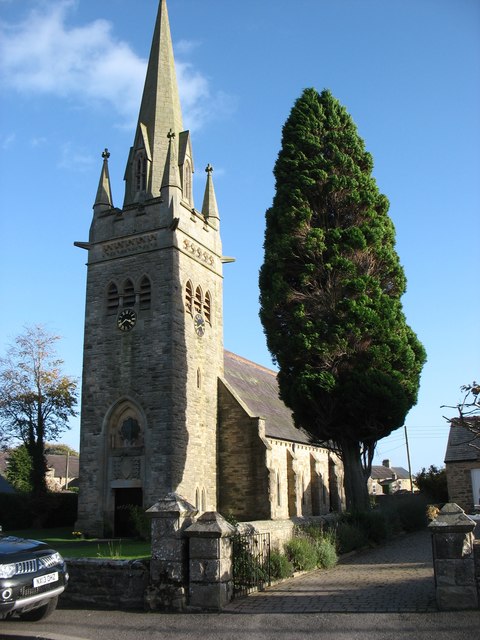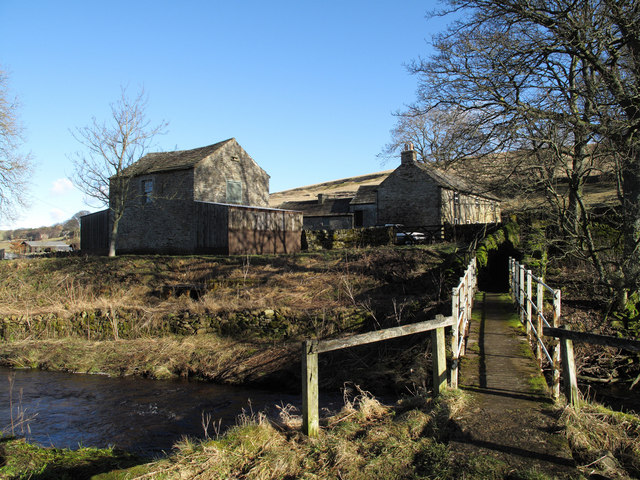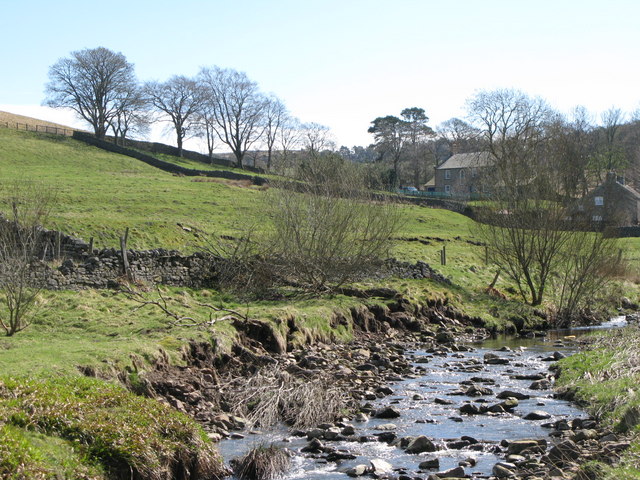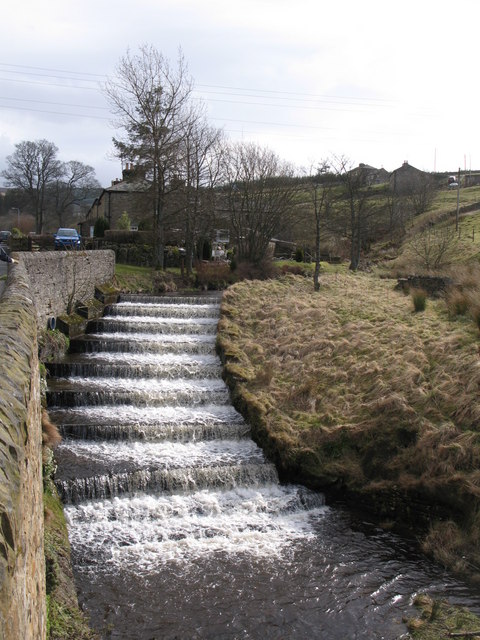Topics > People in History > Saint Cuthbert (634-687)
Saint Cuthbert (634-687)
Saint Cuthbert (c. 634 – 20 March 687) was a saint of the early Northumbrian church in the Celtic tradition. He was a monk, bishop and hermit, associated with the monasteries of Melrose and Lindisfarne in what might loosely be termed the Kingdom of Northumbria in the North East of England. After his death he became one of the most important medieval saints of Northern England, with a cult centred on his tomb at Durham Cathedral. Cuthbert is regarded as the patron saint of northern England. His feast days are 20 March and 4 September (translation).
Cuthbert grew up near Melrose Abbey, a daughter-house of Lindisfarne, today in Scotland. He had decided to become a monk after seeing a vision on the night in 651 that St. Aidan, the founder of Lindisfarne, died, but seems to have seen some military service first. He was quickly made guest-master at the new monastery at Ripon, soon after 655, but had to return with Eata to Melrose when Wilfrid was given the monastery instead. About 662 he was made prior at Melrose, and around 665 went as prior to Lindisfarne. In 684 he was made bishop of Lindisfarne but by late 686 resigned and returned to his hermitage as he felt he was about to die, although he was probably only in his early 50s.
Life
Origins and background
Cuthbert was perhaps of a noble family, and born in what are now the Scottish Borders in the mid-630s, some ten years after the conversion of King Edwin to Christianity in 627, which was slowly followed by that of the rest of his people. The politics of the kingdom were violent, and there were later episodes of pagan rule, while spreading understanding of Christianity through the kingdom was a task that lasted throughout Cuthbert's lifetime. Edwin had been baptised by Paulinus of York, an Italian who had come with the Gregorian mission from Rome, but his successor Oswald also invited Irish monks from Iona to found the monastery at Lindisfarne where Cuthbert was to spend much of his life. This was around 635, about the time Cuthbert was born.
The tension between the Roman and Irish traditions, often exacerbated by Cuthbert's near-contemporary Saint Wilfrid, an intransigent and quarrelsome supporter of Roman ways, was to be a major feature of Cuthbert's lifetime. Cuthbert himself, though educated in the Celtic tradition, followed his mentor Eata in accepting the Roman forms without apparent difficulty after the Synod of Whitby in 664. The earliest biographies concentrate on the many miracles that accompanied even his early life, but he was evidently indefatigable as a travelling priest spreading the Christian message to remote villages, and also well able to impress royalty and nobility. Unlike Wilfrid, his style of life was austere, and when he was able to he lived the life of a hermit, though still receiving many visitors.
In Cuthbert's time the Anglo-Saxon Kingdom of Northumbria included, in modern terms, northern England as well as parts of south-eastern Scotland on an intermittent and fluid basis as far north as the Firth of Forth. Cuthbert may have been from the neighbourhood of Dunbar at the mouth of the Firth of Forth in modern-day Scotland, though the lives record he was fostered as a child near Melrose. Fostering is possibly a sign of noble birth, as are references to his riding a horse when young. One night while still a boy, employed as a shepherd, he had a vision of the soul of Aidan being carried to heaven by angels, and later found out that Aidan had died that night. Edwin Burton finds a suggestion of lowly parentage in the fact that as a boy he used to tend sheep on the mountain-sides near that monastery. He appears to have had military service but at some point joined the very new monastery at Melrose, under the prior Boisil. Upon Boisil's death in 661, Cuthbert succeeded him as prior. Saint Cuthbert was possibly a second cousin of King Aldfrith of Northumbria (according to Irish genealogies), which may have been the reason for his later proposal that Aldfrith should be crowned as monarch.
Career
Cuthbert's fame for piety, diligence, and obedience quickly grew. When Alchfrith, king of Deira, founded a new monastery at Ripon, Cuthbert became its praepositus hospitum or guest master under Eata. When Wilfrid was given the monastery, Eata and Cuthbert returned to Melrose. Illness struck the monastery in 664 and while Cuthbert recovered, the prior died and Cuthbert was made prior in his place. He spent much time among the people, ministering to their spiritual needs, carrying out missionary journeys, preaching, and performing miracles.
After the Synod of Whitby, Cuthbert seems to have accepted the Roman customs, and his old abbot, Eata, called on him to introduce them at Lindisfarne as prior there. His asceticism was complemented by his charm and generosity to the poor, and his reputation for gifts of healing and insight led many people to consult him, gaining him the name of "Wonder Worker of Britain". He continued his missionary work, travelling the breadth of the country from Berwick to Galloway to carry out pastoral work and founding an oratory at Dull, Scotland, complete with a large stone cross, and a little cell for himself. He is also said to have founded St Cuthbert's Church in Edinburgh.
Hermit's life
Cuthbert retired in 676, moved by a desire for the contemplative life. With his abbot's leave, he moved to a spot which Archbishop Eyre identifies with St. Cuthbert's Island near Lindisfarne, but which Raine thinks was near Holburn, at a place now known as St. Cuthbert's Cave. Shortly afterwards, Cuthbert removed to Inner Farne island off the Northumbrian coast, where he gave himself up to a life of great austerity. At first he received visitors, but later he confined himself to his cell and opened his window only to give his blessing. He could not refuse an interview with the holy abbess and royal virgin Elfleda, the daughter of Oswiu of Northumbria, who succeeded St. Hilda as abbess of Whitby in 680. The meeting was held on Coquet Island, further south off the Northumberland coast.
Election to the bishopric of Lindisfarne
In 684, Cuthbert was elected Bishop of Hexham, at a synod at Twyford (believed to be present-day Alnmouth), but was reluctant to leave his retirement and take up his charge; it was only after a visit from a large group, including king Ecgfrith, that he agreed to return and take up the duties of bishop, but instead as Bishop of Lindisfarne, swapping with Eata, who went to Hexham instead. He was consecrated at York by Archbishop Theodore and six bishops, on 26 March 685. After Christmas, 686, however, he returned to his cell on Inner Farne Island (two miles from Bamburgh, Northumberland), which was where he eventually died on 20 March 687 AD, after a painful illness. He was buried at Lindisfarne the same day, and after long journeys escaping the Danes his remains chose, as was thought, to settle at Durham, causing the foundation of the city and Durham Cathedral. The St Cuthbert Gospel is among the objects later recovered from St Cuthbert's coffin, which is also an important artefact.
Legacy
After Cuthbert's death, numerous miracles were attributed to his intercession and to intercessory prayer near his remains. In particular, Alfred the Great, King of Wessex, was inspired and encouraged in his struggle against the Danes by a vision or dream he had of Cuthbert. Thereafter the royal house of Wessex, who became the kings of England, made a point of devotion to Cuthbert, which also had a useful political message, as they came from opposite ends of the united English kingdom. Cuthbert was "a figure of reconciliation and a rallying point for the reformed identity of Northumbria and England" after the absorption of the Danish populations into Anglo-Saxon society, as Michelle Brown puts it. The 8th-century historian Bede wrote both a verse and a prose life of St Cuthbert around 720. He has been described as "perhaps the most popular saint in England prior to the death of Thomas Becket in 1170." In 698 Cuthbert was reburied at Lindisfarne in the decorated oak coffin now usually meant by St Cuthbert's coffin, though he was to have many more coffins. In 995 the "community of Cuthbert" founded and settled at Durham, guided by what they thought was the will of the saint, as the wagon carrying his coffin back to Chester-le-Street after a temporary flight from a Danish invasion became stuck hard on the road.
Cuthbert's cult had appealed to the converted Danes who now made up much of the population of Northumbria, and was also adopted by the Normans when they took over England. Cuthbert's shrine at Durham Cathedral was a major pilgrimage site throughout the Middle Ages, until stripped by Henry VIII's commissioners in the Dissolution of the Monasteries.
During the medieval period, Cuthbert became politically important in defining the identity of the people living in the semi-autonomous region known as the Liberty of Durham, later the Palatinate of Durham. Within this area the Bishop of Durham had almost as much power as the king of England himself, and the saint became a powerful symbol of the autonomy the region enjoyed. The inhabitants of the Palatinate became known as the haliwerfolc, which roughly translates as "people of the saint", and Cuthbert gained a reputation as being fiercely protective of his domain. For example, there is a story that at the Battle of Neville's Cross in 1346, the Prior of the Abbey at Durham received a vision of Cuthbert, ordering him to take the corporax cloth of the saint and raise it on a spear point near the battlefield as a banner. Doing this, the Prior and his monks found themselves protected "by the mediation of holy St Cuthbert and the presence of the said holy Relic." Whether the story of the vision is true or not, the banner of St Cuthbert was regularly carried in battle against the Scots until the Reformation, and it serves as a good example of how St Cuthbert was regarded as a protector of his people. A modern interpretation of the Banner, designed by Northumbria University academic Fiona Raeside-Elliott and embroidered by local textile artist Ruth O'Leary, is now on display at the saint's shrine at Durham cathedral.
Relics
St Cuthberts Tomb.jpg|thumb|right|250px|Location of St Cuthbert's tomb and reburial in Durham Cathedral; behind is a damaged statue of St Cuthbert, holding the head of the king St Oswald (whose head was reburied with Cuthbert)
According to Bede's life of the saint, when Cuthbert's sarcophagus was opened eleven years after his death, his body was found to have been perfectly preserved or incorrupt. This apparent miracle led to the steady growth of Cuthbert's posthumous cultus, to the point where he became the most popular saint of Northern England. Numerous miracles were attributed to his intercession and to intercessory prayer near his remains.
In 875 the Danes took the monastery of Lindisfarne and the monks fled, carrying with them St Cuthbert's body around various places including Melrose. After seven years' wandering it found a resting-place at the still existing St Cuthbert's church in Chester-le-Street until 995, when another Danish invasion led to its removal to Ripon. Then the saint intimated, as it was believed, that he wished to remain in Durham. A new stone church—the so-called "White Church"—was built, the predecessor of the present grand Cathedral.
In 1104 Cuthbert's tomb was opened again and his relics translated to a new shrine behind the altar of the recently completed Cathedral. When the casket was opened, a small book of the Gospel of John, measuring only three-and-a-half by five inches, now known as the St Cuthbert Gospel (now British Library Additional MS 89000, formerly known as the Stonyhurst Gospel), was found. This is the oldest Western book to keep its original bookbinding, in finely decorated leather. Also recovered much later were a set of vestments of 909-916, made of Byzantine silk with a "Nature Goddess" pattern, with a stole and decoration in extremely rare Anglo-Saxon embroidery or opus anglicanum, which had been deposited in his tomb by King Æthelstan (r. 927-939) on a pilgrimage while Cuthbert's shrine was at Chester-le-Street.
Cuthbert's shrine was destroyed in the Dissolution of the Monasteries, but, unusually, his relics survived and are still interred at the site, although they were also disinterred in the 19th century, when his wooden coffin and various relics were removed. St Cuthbert's coffin (actually one of a series of several) as reconstructed by Ernst Kitzinger and others remains at the cathedral and is an important rare survival of Anglo-Saxon carving on wood. When the coffin was last inspected on 17 May 1827, a Saxon square cross of gold, embellished with garnets, in the characteristic splayed shape, used later as the heraldic emblem of St Cuthbert in the arms of Durham and Newcastle universities, was found. One legend tells that, prior to the arrival of Henry's commissioners, the monks covertly removed Cuthbert's body from the cathedral, reburying it in a secret location within the grounds of Crayke Abbey. The body was replaced by that of a recently deceased local brother. Today, the legend continues, the true location is known only to 12 monks, its whereabouts only revealed to one of their brothers when one of their number dies.
Namesakes
The flag of County Durham since 2013 features the Cross of St Cuthbert, counterchanged on the county colours of blue and gold. The Cross of St Cuthbert features as the principal charge on the coat of arms of the University of Durham, granted in 1843, blazoned Argent, a Cross of St Cuthbert Gules, on a canton Azure, a chevron Or, between three lions rampant of the first ('A red Cross of St Cuthbert on a silver shield with three little silver fighting lions around a gold chevron on a blue square in the top left-hand corner'). The Cross also features in the arms of many of its constituent colleges. The University of Newcastle upon Tyne, formerly King's College in the University of Durham, features St Cuthbert's Cross on its arms, originally granted in 1937, too. The Newcastle University arms are blazoned Azure, a Cross of St Cuthbert Argent, and on a chief of the last a lion passant guardant Gules. ('A silver Cross of St Cuthbert on a blue shield, with a red lion walking and looking towards you on the silver top third portion of the shield.') The cross of St Cuthbert also features on the badges of the two Anglican secondary schools of Newcastle, namely Dame Allan's Schools and Sunderland High School.
St Cuthbert's Society, a college of Durham University established in 1888, is named after him and is located only a short walk from the coffin of the saint at Durham Cathedral. The Society celebrates St Cuthbert's Day on or around each 20 March with a magnificent feast. "Cuth's Day", the annual college day, is celebrated in the Easter term with music, entertainment, festivities and drinking. Cuddy's Corse, is a way-marked walking route between the two churches named after Cuthbert: that at Chester-Le-Street, and Durham Cathedral. Devised by Chris Kilkenny it marks the journey between two of the last resting places of the coffin.
Worksop College, founded as St Cuthbert's in 1895, was the last of the Woodard Schools to be opened.
St Cuthbert is also the namesake of St Cuthbert's College in Epsom, New Zealand, which celebrates St Cuthbert's Day on 21 March as a day of school celebration. The school's houses are named after important locations in the life of the saint: Dunblane (yellow), Elgin (green), Iona (purple), Kelso (blue), Lindisfarne (white), Melrose (red), York (orange) and Durham (pink).
St Cuthberts High School, a Roman Catholic school in Newcastle upon Tyne is named after the saint. St Cuthbert's day is celebrated with Mass, and the school prayers still include reference to their patron Saint (always ending with the invocation "St Cuthbert, pray for us"). The school badge features a bishop's crook in reference to St Cuthbert's time as a bishop, as well as ducks, reflecting his love of the animals.
St. Cuthbert's Co-operative Society opened its first shop in Edinburgh in 1859, and expanded to become one of the largest Co-ops before amalgamating with the Dalziel Society of Motherwell in 1981 and being renamed Scotmid. Its dairy used horse drawn delivery floats until 1985, and between 1944 and 1959 employed as a milkman one Sean Connery, who later went on to fame as the first James Bond.
The Roman Catholic Diocese of Hexham and Newcastle hold St Cuthbert as its patron saint, with the consecration of bishops in the diocese always taking place on 20 March, Cuthbert's feast day in the Catholic Church.
Many churches are named for Cuthbert. An Orthodox Community in Chesterfield, England has taken St Cuthbert as their patron.
Crinoid columnals extracted from limestone quarried on Lindisfarne, or found washed up along the foreshore, which were threaded into necklaces or rosaries, became known as St Cuthbert's beads.
In Northumberland the eider duck is known as the cuddy duck. While on the Farne Islands, Cuthbert instituted special laws to protect the ducks and other seabirds nesting on the islands.
They still breed in their thousands off the Northumberland Coast.
In Cumbria, the civil parish and hamlet of Holme St Cuthbert are named after him, as is the parish church. It is a rural area, with one larger village and numerous smaller hamlets. The total population was 421 at the 2001 census.
St Cuthbert's Way is one of the most beautiful, varied and enjoyable long distance walking routes in Britain, and one of Scotland's Great Trails.

Co-Curate Page
Lindisfarne Gospels
- The Lindisfarne Gospels is a ceremonial illustrated manuscript incorporating the gospels of Saints Matthew, Mark, Luke and John, and art work with Anglo-Saxon and Celtic influences. The manuscripts were produced …

Co-Curate Page
Holy Island
- Overview History Timeline Map Street View The Holy Island of Lindisfarne is a tidal island located about a mile off the Northumberland coast, linked to the mainland at low tide …

Co-Curate Page
Durham Cathedral
- Overview History Map Inside The Cathedral Church of Christ, Blessed Mary the Virgin and St Cuthbert of Durham, usually known as Durham Cathedral and home of the Shrine of St …
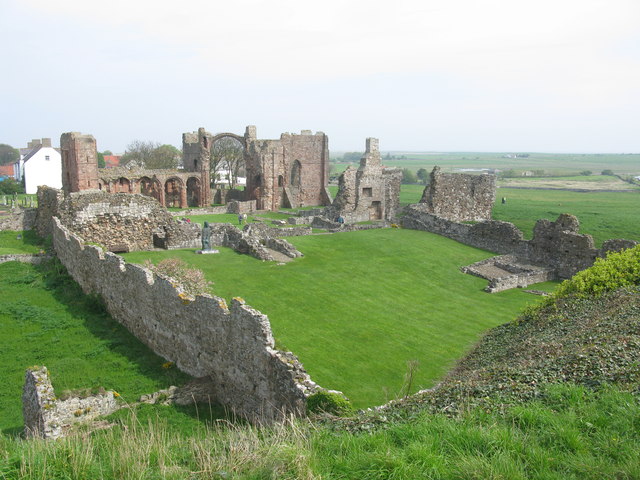
Co-Curate Page
Lindisfarne Priory
- Overview About Lindisfarne Priory Map Street View "Lindisfarne was the site of the earliest Christian monastery in Anglo-Saxon Northumbria and one of the most important centres of early Christianity in …
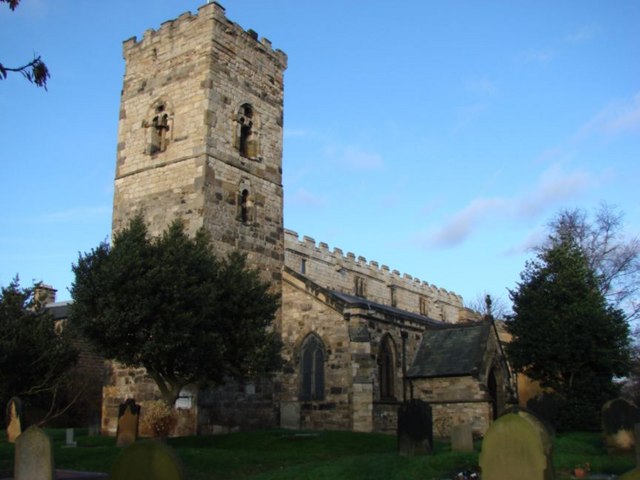
Co-Curate Page
St Cuthbert's Church, Billingham
- Overview Map St Cuthbert’s church is located on the west side of the green at the centre of old Billingham in the borough of Stockton-on-Tees. The church's history goes back to the 9th …
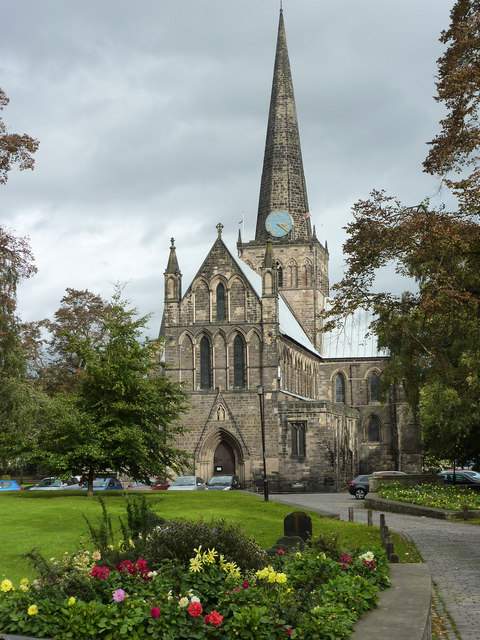
Co-Curate Page
St Cuthbert's Church
- Overview Map In 995 AD Darlington was one of the resting places of St Cuthbert’s remains on the journey from Ripon to Durham. Bishop Puiset built a palace (on the site of …
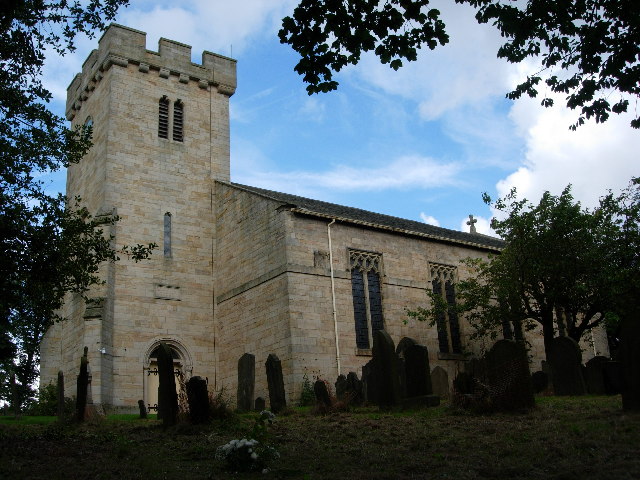
Co-Curate Page
Church of St Margaret of Antioch, Tanfield
- Overview Map Street View "Little is known for certain about the 'early' days of St Margaret's Church, but it is generally believed that St Cuthbert's monks chose Tanfield to hide …
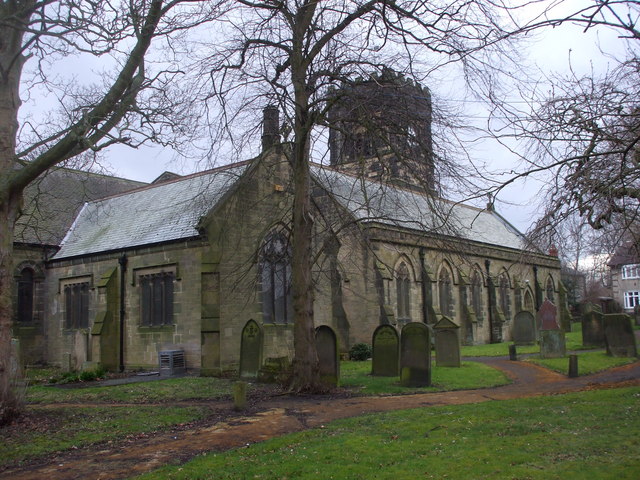
Co-Curate Page
Church of St Cuthbert
- Overview Map Street View St Cuthbert's Church in Bedlington can be dated back to the 10th Century and was built on the site of an earlier church.[1] The remains of …
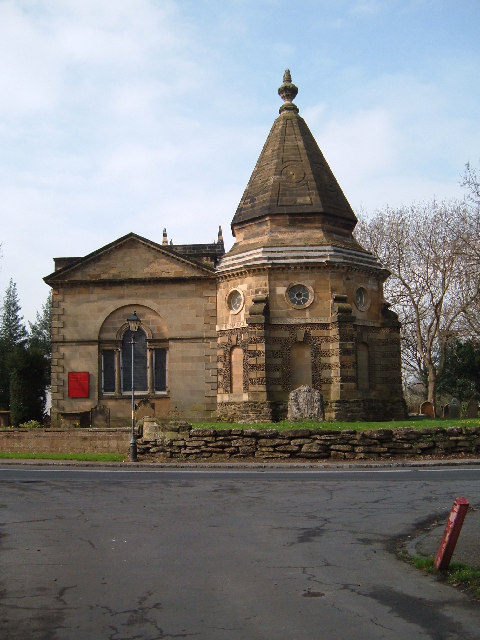
Co-Curate Page
Church of St Cuthbert, Kirkleatham
- Overview Map Street View St Cuthbert’s Church in the village of Kirkleatham was built in 1763 on the site of a much earlier church, thought to have dated from 800 AD. The …
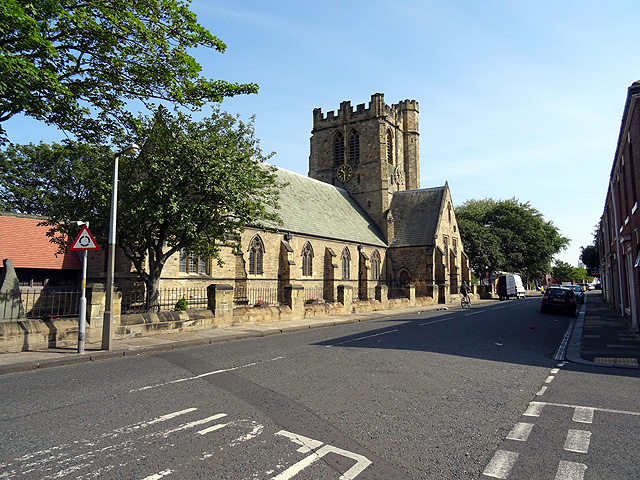
Co-Curate Page
Church of St. Cuthbert
- Overview Map Street View The Church of St. Cuthbert in Blyth, Northumberland was built in 1892. It replaced an earlier church built in 1751; at that time Blyth was part …
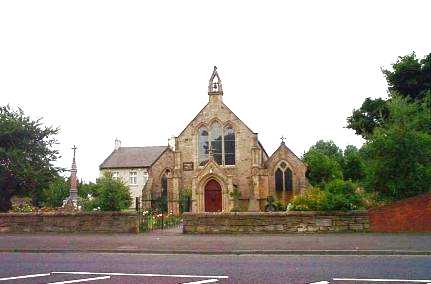
Co-Curate Page
Church of St Cuthbert RC, Cowpen
- Overview Map Street View The Roman Catholic church of St Cuthbert in Cowpen, Blyth, Nothumberland, is located off Cowpen Road (A193). The Sidney Family came to Cowpen Hall in 1804 …
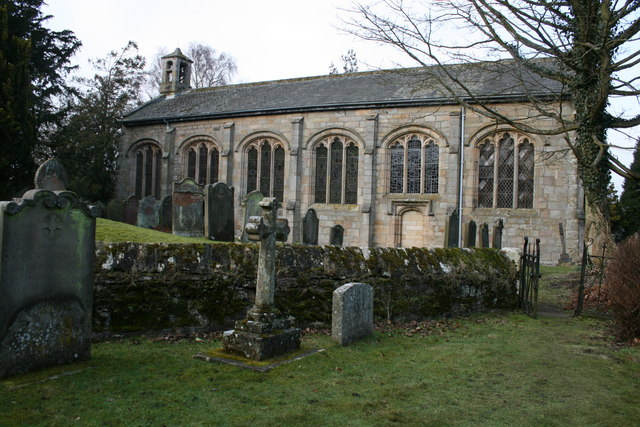
Co-Curate Page
Church of St. Cuthbert, Beltingham
- Overview About the Church Map The Parish Church at Beltingham was built in the late 15th century, but with some older parts dating to c.1260. It was formerly a domestic …
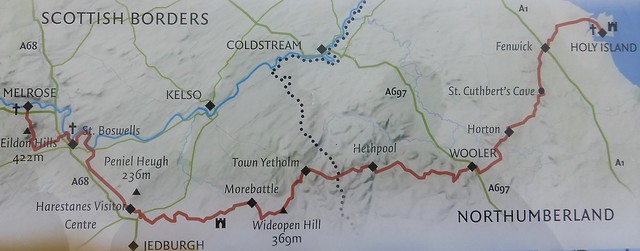
Co-Curate Page
St. Cuthbert's Way
- St. Cuthbert's Way is a long distance trail between Melrose Abbey in Scotland and Lindisfarne (Holy Island) in Northumberland. The route is inspired by St. Cuthbert who began his religious …
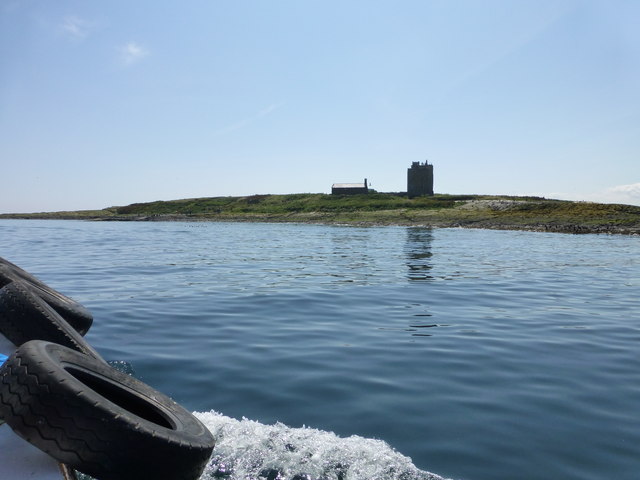
Co-Curate Page
Farne Islands
- Overview About The Farne Islands Map The Farne Islands are located off the coast of Northumberland, just over 2 miles north of Seahouses. Most of the islands are now owned …
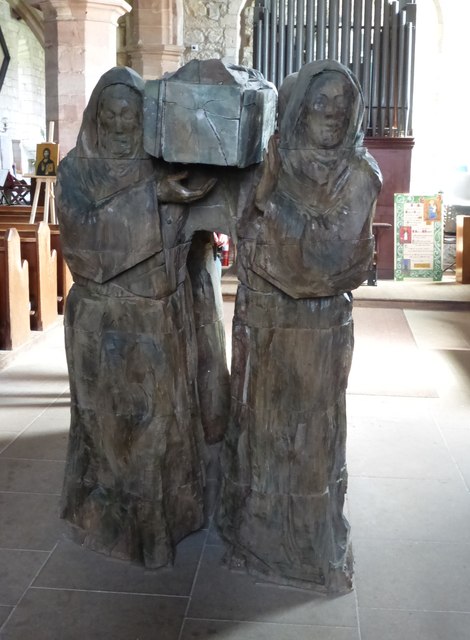
Co-Curate Page
Journey (Sculpture)
- "Journey" is a wooden sculpture, carved from seven elm trees, by Fenwick Lawson (1999). It is located in St. Mary's Church on Holy Island. The sculpture depicts the monks of …
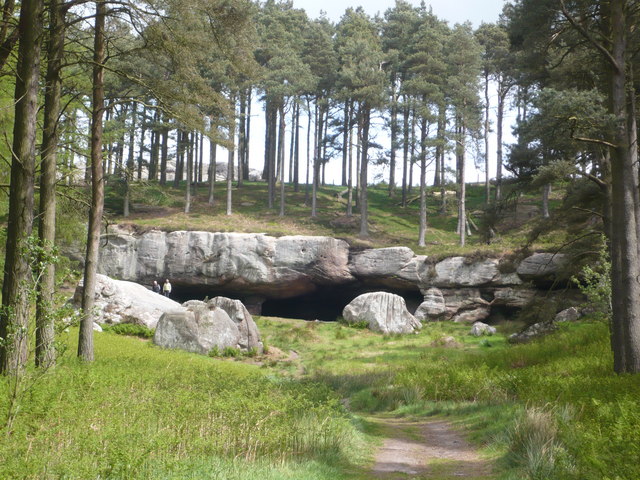
Co-Curate Page
St. Cuthbert's Cave, nr Holburn
- Overview Map Street View St. Cuthbert’s Cave near Holburn in Northumberland is formed by a 20m overhanging outcrop of Sandstone rock, supported by a natural stone pillar. It is reputed …
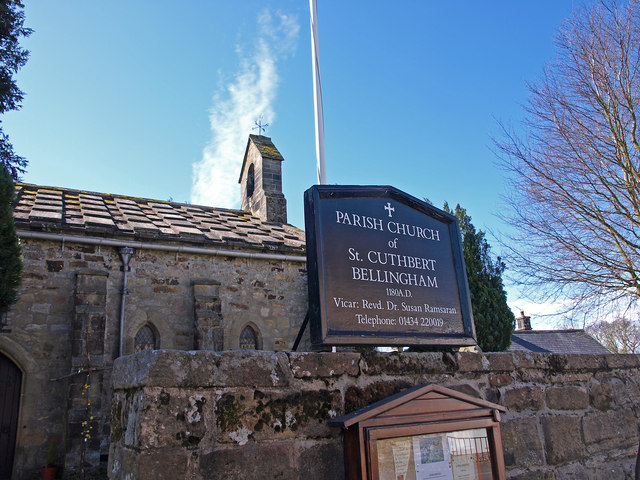
Co-Curate Page
Church of St. Cuthbert
- Overview Map Street View St Cuthbert's is the Parish Church in Bellingham. The church dates from the 13th century; it was extensively remodelled in 1609. The church was restored and …
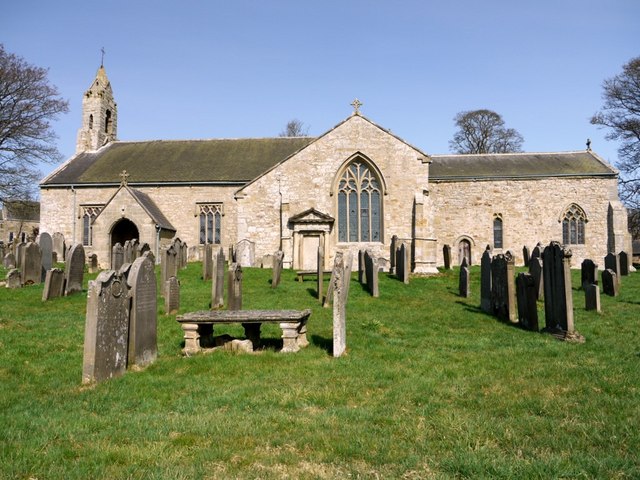
Co-Curate Page
Church of St Cuthbert
- Overview About St Cuthbert's Church Map Street View St Cuthbert's Parish Church in Elsdon, Northumberland, dates from the 12th century, with alterations and additions in the 14th and 17th centuries. The …
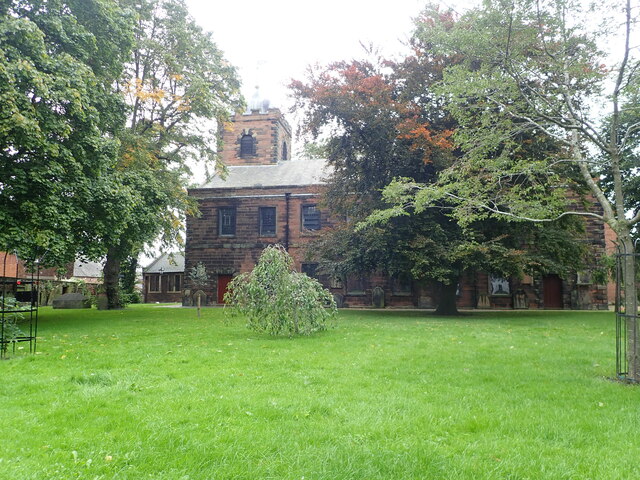
Co-Curate Page
Church of St Cuthbert
- Overview Map Street View "The Church stands not east-west but square to the Roman Road north through Carlisle (the A6, in town Blackfriars St). It is therefore of early foundation, …


Co-Curate Page
Lindisfarne Gospels
- The Lindisfarne Gospels is a ceremonial illustrated manuscript incorporating the gospels of Saints Matthew, Mark, Luke and John, and art work with Anglo-Saxon and Celtic influences. The manuscripts were produced …

Co-Curate Page
Holy Island
- Overview History Timeline Map Street View The Holy Island of Lindisfarne is a tidal island located about a mile off the Northumberland coast, linked to the mainland at low tide …

Co-Curate Page
Durham Cathedral
- Overview History Map Inside The Cathedral Church of Christ, Blessed Mary the Virgin and St Cuthbert of Durham, usually known as Durham Cathedral and home of the Shrine of St …

Co-Curate Page
Lindisfarne Priory
- Overview About Lindisfarne Priory Map Street View "Lindisfarne was the site of the earliest Christian monastery in Anglo-Saxon Northumbria and one of the most important centres of early Christianity in …

Co-Curate Page
St Cuthbert's Church, Billingham
- Overview Map St Cuthbert’s church is located on the west side of the green at the centre of old Billingham in the borough of Stockton-on-Tees. The church's history goes back to the 9th …

Co-Curate Page
St Cuthbert's Church
- Overview Map In 995 AD Darlington was one of the resting places of St Cuthbert’s remains on the journey from Ripon to Durham. Bishop Puiset built a palace (on the site of …

Co-Curate Page
Church of St Margaret of Antioch, Tanfield
- Overview Map Street View "Little is known for certain about the 'early' days of St Margaret's Church, but it is generally believed that St Cuthbert's monks chose Tanfield to hide …

Co-Curate Page
Church of St Cuthbert
- Overview Map Street View St Cuthbert's Church in Bedlington can be dated back to the 10th Century and was built on the site of an earlier church.[1] The remains of …

Co-Curate Page
Church of St Cuthbert, Kirkleatham
- Overview Map Street View St Cuthbert’s Church in the village of Kirkleatham was built in 1763 on the site of a much earlier church, thought to have dated from 800 AD. The …

Co-Curate Page
Church of St. Cuthbert
- Overview Map Street View The Church of St. Cuthbert in Blyth, Northumberland was built in 1892. It replaced an earlier church built in 1751; at that time Blyth was part …

Co-Curate Page
Church of St Cuthbert RC, Cowpen
- Overview Map Street View The Roman Catholic church of St Cuthbert in Cowpen, Blyth, Nothumberland, is located off Cowpen Road (A193). The Sidney Family came to Cowpen Hall in 1804 …

Co-Curate Page
Church of St. Cuthbert, Beltingham
- Overview About the Church Map The Parish Church at Beltingham was built in the late 15th century, but with some older parts dating to c.1260. It was formerly a domestic …

Co-Curate Page
St. Cuthbert's Way
- St. Cuthbert's Way is a long distance trail between Melrose Abbey in Scotland and Lindisfarne (Holy Island) in Northumberland. The route is inspired by St. Cuthbert who began his religious …

Co-Curate Page
Farne Islands
- Overview About The Farne Islands Map The Farne Islands are located off the coast of Northumberland, just over 2 miles north of Seahouses. Most of the islands are now owned …

Co-Curate Page
Journey (Sculpture)
- "Journey" is a wooden sculpture, carved from seven elm trees, by Fenwick Lawson (1999). It is located in St. Mary's Church on Holy Island. The sculpture depicts the monks of …

Co-Curate Page
St. Cuthbert's Cave, nr Holburn
- Overview Map Street View St. Cuthbert’s Cave near Holburn in Northumberland is formed by a 20m overhanging outcrop of Sandstone rock, supported by a natural stone pillar. It is reputed …

Co-Curate Page
Church of St. Cuthbert
- Overview Map Street View St Cuthbert's is the Parish Church in Bellingham. The church dates from the 13th century; it was extensively remodelled in 1609. The church was restored and …

Co-Curate Page
Church of St Cuthbert
- Overview About St Cuthbert's Church Map Street View St Cuthbert's Parish Church in Elsdon, Northumberland, dates from the 12th century, with alterations and additions in the 14th and 17th centuries. The …

Co-Curate Page
Church of St Cuthbert
- Overview Map Street View "The Church stands not east-west but square to the Roman Road north through Carlisle (the A6, in town Blackfriars St). It is therefore of early foundation, …

Church of St. Cuthbert, Beltingham
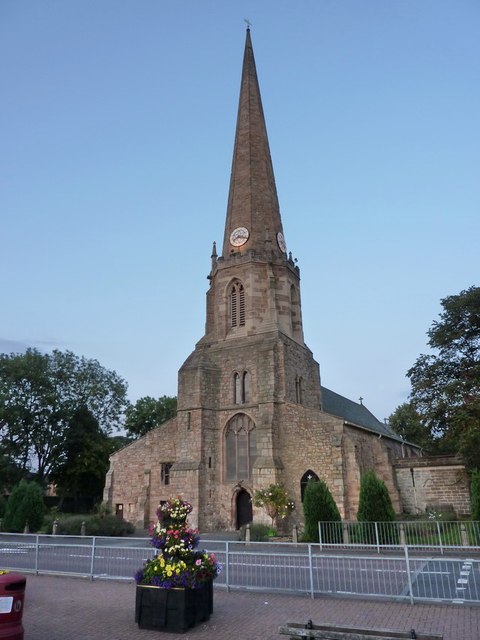
Church of St Mary and St Cuthbert, Chester-le-Street

Church of St Cuthbert, Kirkleatham
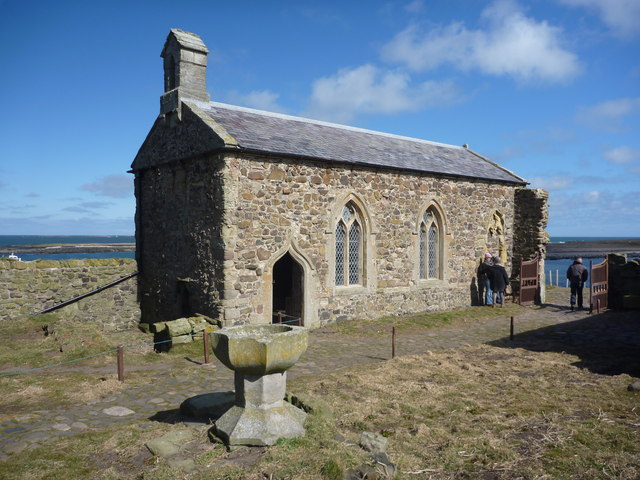
Chapel of St. Cuthbert, Inner Farne

St Cuthbert's Church, Darlington

Church of St Cuthbert RC, Cowpen, Blyth

St. Cuthbert's Cave, nr Holburn

Church of St Cuthbert, Bedlington

Journey, Sculpture, Holy Island

Church of St Cuthbert, Carlisle

Church of St. Cuthbert, Bellingham
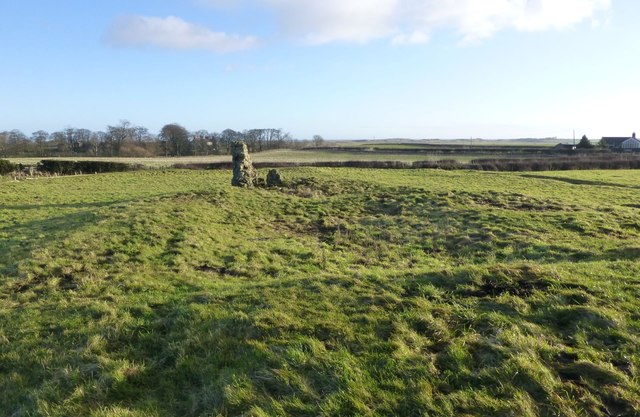
Deserted Medieval Village and Chapel, Tughall

St Cuthbert's Church, Billingham

Church of St Margaret of Antioch, Tanfield
